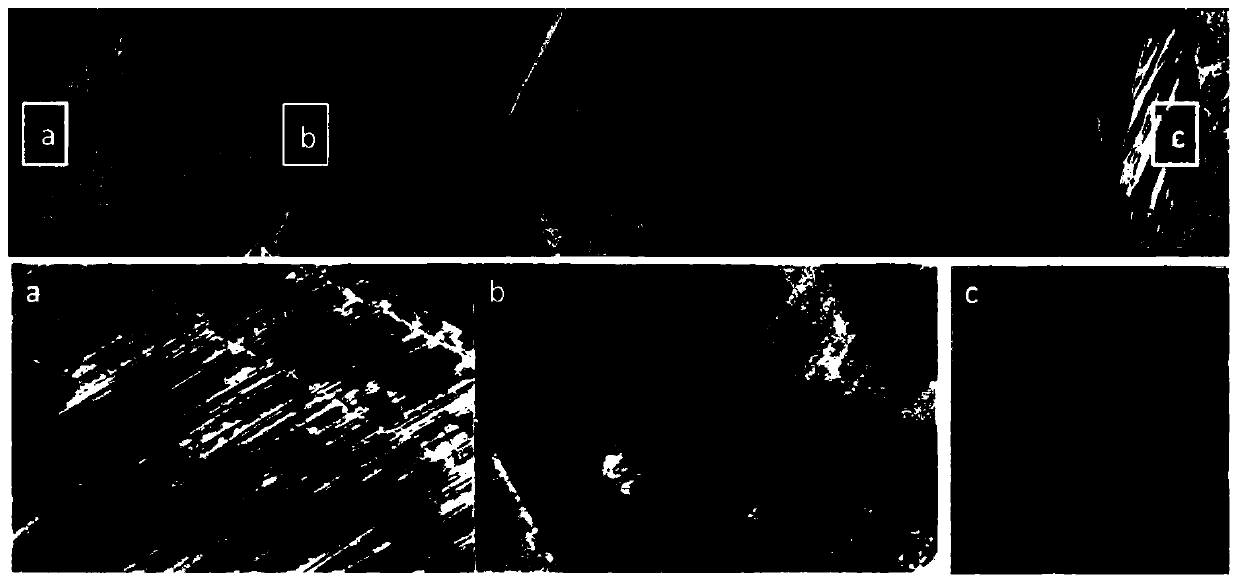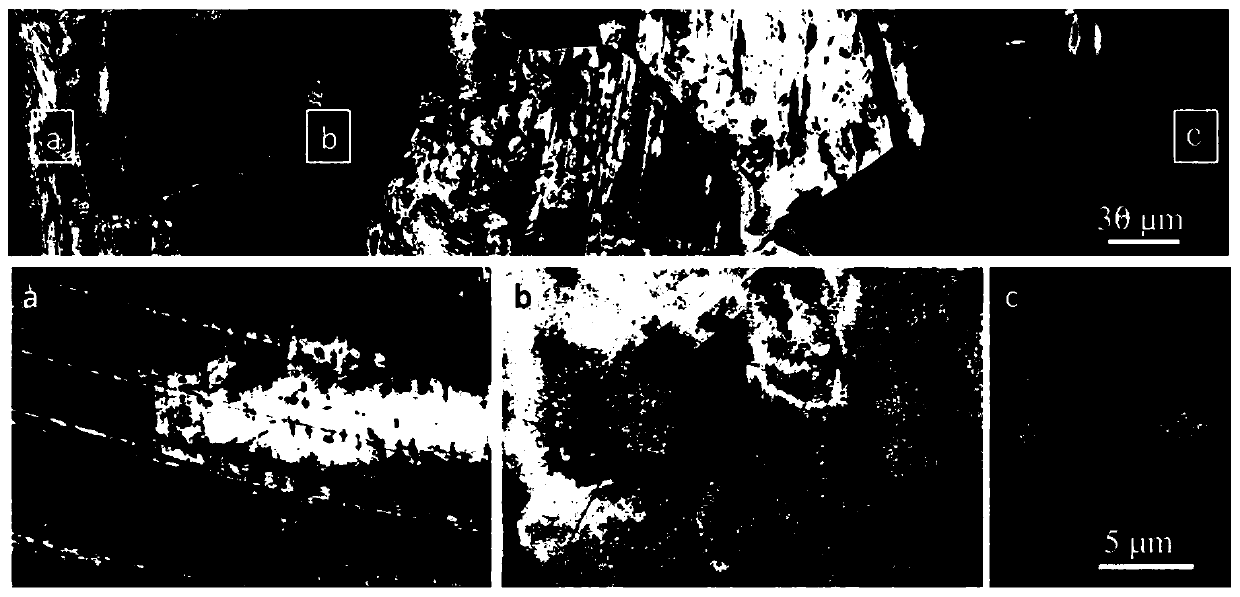Cyclic torsion machining process for improving mechanical property of metal material
A technology of metal materials and processing technology, applied in the field of cyclic torsion processing technology, can solve the problems of limited strength, mechanical instability, complex equipment, etc., and achieve high yield strength and tensile strength, uniform plasticity and elongation at break, good Effect of Strength and Plasticity Matching
- Summary
- Abstract
- Description
- Claims
- Application Information
AI Technical Summary
Problems solved by technology
Method used
Image
Examples
Embodiment 1
[0034] In this embodiment, 304 austenitic stainless steel rods are subjected to small-angle cyclic reciprocating torsional deformation treatment.
[0035] Fix one end of the coarse-grained 304 austenitic stainless steel sample, and apply cyclic torsional deformation to the other end (such as figure 1 Shown), the gradient structure 304#1 sample was obtained.
[0036] The process parameters of the gradient structure 304#1 sample are selected as follows: the diameter of 304 austenitic stainless steel is 6 mm, the torsion angle amplitude is 5 degrees, the torsion speed is 5000° / min, the torsion cycle is 200 cycles, and the torsion time is about 14 seconds. The temperature is room temperature 25 degrees.
[0037] As the depth from the surface increases, the degree of deformation in the material presents a monotonically decreasing trend, forming a gradient distribution of deformation microstructure ( figure 2 ). However, the microstructure is still austenite and no martensite ph...
Embodiment 2
[0040] In this embodiment, a cyclic torsional deformation treatment is applied to the coarse-grained 304 austenitic stainless steel #2 sample to obtain a 304 #2 sample with a gradient structure.
[0041] The difference from Example 1 is that the process parameters of the gradient structure 304#2 sample are selected as follows: the diameter of 304 austenitic stainless steel is 6 mm, the torsion angle amplitude is 15 degrees, the torsion speed is 5000 ° / min, and the torsion cycle is 200 cycles , the torsion time is about 6 minutes, and the torsion temperature is 25 degrees at room temperature.
[0042] As the depth from the surface increases, the degree of deformation in the material presents a monotonically decreasing trend, forming a gradient distribution of deformation microstructure ( figure 2 ). The outermost surface is still coarse-grained ( Figure 4 ), there are high-density dislocations distributed inside the coarse grain, a large number of dislocation cells and disl...
Embodiment 3
[0050] This example is for coarse-grained Al 0.1 CoCrFeNi high-entropy alloy samples subjected to cyclic torsional deformation treatment.
[0051] The process parameters of gradient structure high-entropy alloy #2 samples are selected as follows: Al 0.1 The CoCrFeNi high-entropy alloy sample diameter is 4.5mm, the torsion angle amplitude is 15 degrees, the torsion speed is 1800° / min, the torsion cycle is 200 cycles, the torsion time is about 3 minutes, and the torsion temperature is 25 degrees at room temperature.
[0052] As the depth from the surface of the material increases, the microhardness of the gradient structure high-entropy alloy #2 sample gradually decreases from 4.0GPa to 2.4GPa, which has the characteristics of a gradient change, which is significantly higher than that of the coarse-grained high-entropy alloy sample (1.7GPa), such as Figure 9 shown.
[0053] In this embodiment, the gradient structure high-entropy alloy #2 sample is subjected to uniaxial tensil...
PUM
| Property | Measurement | Unit |
|---|---|---|
| length | aaaaa | aaaaa |
| diameter | aaaaa | aaaaa |
| microhardness | aaaaa | aaaaa |
Abstract
Description
Claims
Application Information
 Login to View More
Login to View More - R&D
- Intellectual Property
- Life Sciences
- Materials
- Tech Scout
- Unparalleled Data Quality
- Higher Quality Content
- 60% Fewer Hallucinations
Browse by: Latest US Patents, China's latest patents, Technical Efficacy Thesaurus, Application Domain, Technology Topic, Popular Technical Reports.
© 2025 PatSnap. All rights reserved.Legal|Privacy policy|Modern Slavery Act Transparency Statement|Sitemap|About US| Contact US: help@patsnap.com



